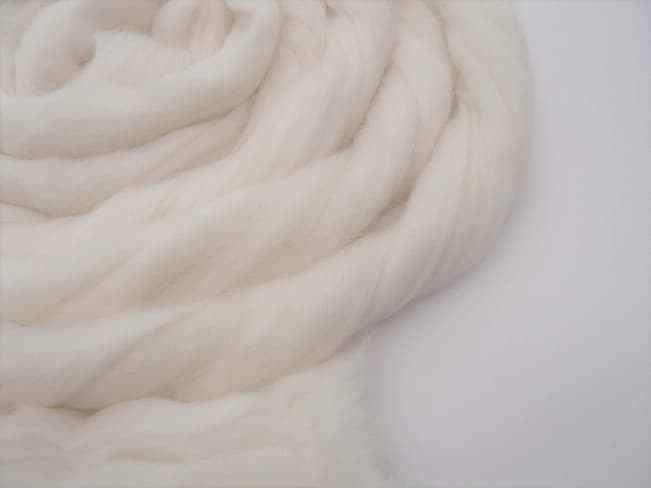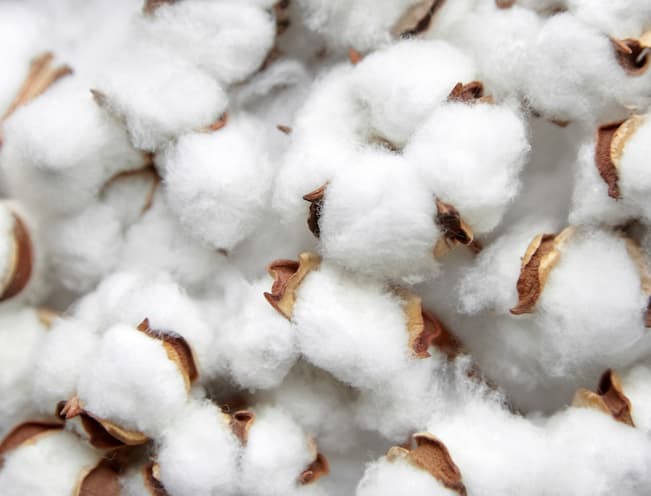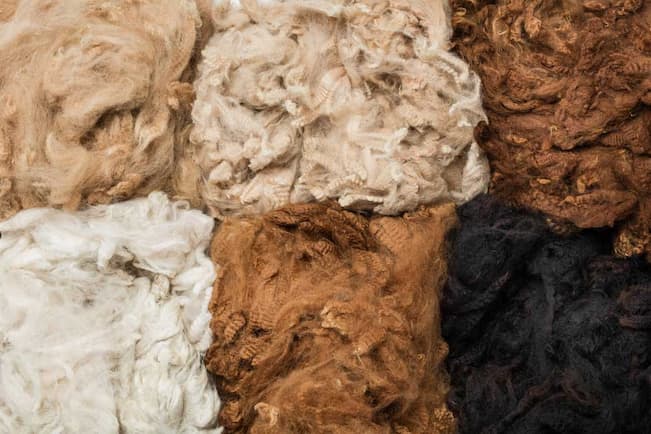In addition to the susceptibility of infants to food and seasonal allergies, atopic dermatitis (eczema) and contact dermatitis are not uncommon. Your baby will be sleeping for most of the days the first months of its life, making it crucial to make sure its sleeping environment is safe. After all, skin to skin is as close as it gets and what your child is wearing or sleeps on may cause an allergic reaction, atopic dermatitis or worse.
Natural fibres include silk, wool, cotton and linen while synthetic or man-made ones are rayon, nylon, polyester, rubber, fibreglass, and spandex. Unfortunately, all fibres, although some more than less, can cause irritant contact dermatitis in susceptible individuals. Even so, it’s rare for natural ones to cause atopic dermatitis. Conversely, the finishing resins, dyes, glues, chemical additives and tanning agents used in processing the fabric or clothing can cause both atopic dermatitis and allergies. Thus, the manufacturing process could be more important than the fibre itself.
Even SIDS (Sudden Infant Death Syndrome) is related to allergies and inflammation. Although multifactorial by origin, creating a safe sleeping environment is crucial when it comes to preventing SIDS. Regarding the bedding, studies range from the complete dismissal of soft bedding to the appraisal of using a wool baby blanket. Clearly, more research is needed but one thing is certain: bedding matters.
Merino Wool

Over 90% of 700 users participating in 6 separate studies conducted in New Zealand, Australia, the United Kingdom and the United State reported beneficial effects from wool bedding. The majority of users reported sleep improvement while certain conditions like arthritis, rheumatism and back ailments were relieved. Unlike adults, babies have to deal with more acute issues instead of chronic ones, like allergies and SIDS, which brings us to the following question: Can babies sleep on wool and what can a wool baby blanket offer your baby that other materials can’t?
Wool enables the skin to breathe, provides pressure relief, repels water, has excellent insulating and thermoregulatory properties, is hypoallergenic and resistant to flame and static electricity. Forget about being heavy as merino wool is known to be the finest wool on the market. Nevertheless, not all merino wool is equal and the processing of the wool needs to be taken into consideration. If not highly processed, wool contains lanolin which has antibacterial properties.
One important reason why wool is great for kids is its chemical properties. Being electrically neutral, it doesn’t attract electrically charged allergens. In fact, it repels dust, dirt and odours. That’s why you don’t have to wash it frequently and why woollen socks only need airing. This also contributes to its antiallergy properties as fragrances, soaps and detergents are some of the most common allergens.
Even so, wool unjustifiably got a reputation for being hard to wash and people tend to wonder does merino wool shrink. Scandinavians, the devotees of wool, claim that as long as your machine is set on a wool cycle, you’re good to go. In fact, even higher temperatures are recommended as it’s not the heat but the combination of heat and movement that’s causing the shrinking. However, if you’re one to think that it’s best to stay on the safe side, check the labels or choose both a wool cycle and 30 degrees.
In the past, wool garments were perceived as a poor choice for those with sensitive skin or atopic dermatitis. However, a study has tested the effects of wool on children 5 years and older. Subjects were assessed after wearing Merino wool for 6 weeks. Compared with standard clothing, significant improvements in all test scores measuring severity, eczema area and life quality were seen.
Moreover, soft bedding has been strongly opposed by some authorities as a SIDS risk even though babies have slept on wool traditionally in the past, making it only natural to wonder is merino safe. Wool, in particular, has hollow fibres and air pockets are created in between. On one hand, this gives it strong thermoregulatory characteristics but on the other, the incomplete washout of air exposes the baby to high CO2 which can enable suffocation if it’s face down. On the other hand, babies with SIDS usually have elevated body temperature and were warm and perspired when found, linking elevated body temperature (hyperthermia)with SIDS. Hence, a fabric that allows thermoregulation and breathability like wool would be highly appreciated.
Furthermore, a study observed six symptom-free but low birth weight babies on and off a woollen bedding surface. The weight gain of the babies was significantly greater due to the energy preservation caused by reduced movements throughout the night and the swaddling effect wool had on the infant. The reduced minimal and moderate movement can additionally minimise the risk of your baby ending up in a risky prone position. Importantly, there has been one New Zealand study where the use of a wool ‘waterproof’ under a blanket was associated with a significantly reduced risk of SIDS. However, more research is needed to pinpoint exactly which features of wool are responsible for this effect.
To conclude, although scientists haven’t yet discovered what are the safest crib sheets and baby blankets, wool can help you create an anti-allergy sleep environment one way or the other. It’s both high quality and convenient to use. Taking extra precautions for the prevention of allergies and SIDS can make up for the believed risks it might impose and relieve your uncertainty.
Organic Cotton

Cotton is probably the most popular choice when it comes to baby bedding and clothes. No wonder, as it’s affordable, breathable, absorbable, highly resistant to friction and tearing. Contrary to popular belief, cotton is not environmentally friendly, just by being natural. It requires gigantic quantities of water and pesticides. Organic cotton, on the other hand, is produced without the use of fertilisers and pesticides and uses 91 % less water than regular cotton and produces fewer greenhouse gas emissions. As skin communicates with anything you put on it, pure and organic cotton exposes your baby’s skin to less harmful chemicals than regular cotton does.
Furthermore, cotton treated with natural antibacterial substances such as chitin, chitosan and silver gave it tremendous antibacterial efficacy and naturally brown-coloured cotton (NBCC) fibres have been reported as having excellent antibacterial and antioxidant properties.
Silk

Silk has got what it takes to be stylish and functional. But when waste has been turned to garments with taste, we know that we’ve hit the jackpot. The cocoon of the silkworm, which is thrown away when producing regular silk, can be turned into burette silk. This same cocoon contains a plentitude of antimicrobial substances that protect the silk fibres during their creation. In addition, they can protect the wearer of burette silk. Thus, even though raw burette silk is not valued in the silk market, it’s a great choice for child bedding and clothing.
Being luxurious, hypoallergenic, breathable, lightweight and cool to touch makes it very suitable for irritated skin. To keep it naturally strong, durable and beautiful you should Hand wash or gentle machine wash it at a maximum of 30°C.
Alpaca Wool

High up in the Andes at 3000-5000 m, smallholders manage Peruvian baby alpaca and its fibres. Traditionally, families live off of alpaca farming. The areas are not cultivated or chemically fertilised, making alpaca wool authentically organic even though a globally renowned organic certification can’t be provided in such conditions due to technicalities. The animals are sheared by hand by the families once a year. Its scarcity combined with its quality is why is alpaca wool so expensive.
Baby alpaca fibre is incredibly soft and lightweight but a durable insulator. This is due to the microscopic air pockets similar to those of wool. Not only do they provide super insulation but also make the fibres feel as light as air while the fibre is strong. Although it’s not elastic as wool, its dropping can actually be useful as it will keep up and grow as your child does.


























